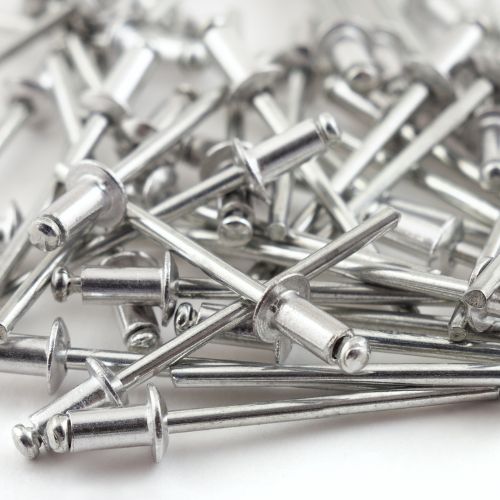About our Pop Rivet range:
We have all types of pop rivets available in various designs - dome head, countersunk, flange, sealed, and triform – each in a range of finishes.
- Dome head rivets are the most common, this option leaves a slightly raised dome finish.
- A countersunk rivet fits flush to the surface in a countersunk hole.
- flange rivets spread the load over a greater area and sealed rivets leave a sealed closed-end finish.
- A triform rivet splits the body into three parts, which reduces the likelihood of damage to the material, making this the perfect option for soft metal sheets.
We have stainless steel blind rivets available, as well as in other materials like normal steel, and two types of aluminium (standard and black-painted finish) which come in two sizes.
Frequently Asked Questions (FAQs)
To further clarify when and how to use pop rivets, here are answers to some commonly asked questions:
What is the difference between a pop rivet and a solid rivet?
Pop rivets, also known as blind rivets, can be installed from one side of the workpiece using a pop rivet gun, making them ideal for blind applications. Solid rivets require access to both sides of the material and are typically used in heavy-duty applications due to their superior strength. We offer a wide range of pop rivets for various applications.
How do I know what size pop rivet to use?
The size of the pop rivet depends on two factors:
- The grip range, which should match the total thickness of the materials being joined.
- The rivet diameter, which should be slightly smaller than your drilled hole.
Measure the total thickness of your materials and choose a rivet with a suitable grip range. The rivet diameter is typically determined by the strength required for your application.
Can pop rivets be removed?
Yes, pop rivets can be removed, but the process destroys the rivet. To remove a pop rivet:
- Use a drill bit slightly larger than the rivet's mandrel to drill out the centre.
- Push out the remaining sleeve.
- If necessary, enlarge the hole slightly to remove any leftover material.
Always wear safety glasses when removing rivets to protect against flying debris.
Do I need a special tool to install pop rivets?
Yes, you need a pop rivet gun, also known as a riveting tool, to install pop rivets. These come in three main types:
- Manual hand-operated guns
- Lever-operated guns for increased leverage
- Pneumatic guns for high-volume work
How do I choose between aluminium and steel pop rivets?
The choice between aluminium and steel rivets depends on your specific application:
Aluminium rivets are:
- Lighter in weight
- Resistant to corrosion
- Ideal for outdoor use or with aluminium materials
- Suitable for applications where weight is a concern
Steel rivets offer:
- Higher strength
- Better performance in high-stress applications
- Suitability for use with steel materials
- Greater durability in certain environments
Consider factors like the materials you're joining, the environment the rivets will be exposed to, and the strength requirements of your application.
Remember, choosing the right rivet is crucial for the success and safety of your project. Always consult product specifications or seek expert advice from us when in doubt.




